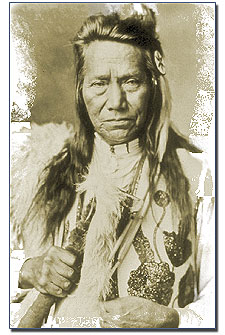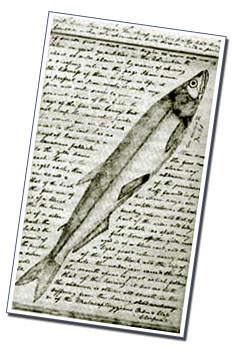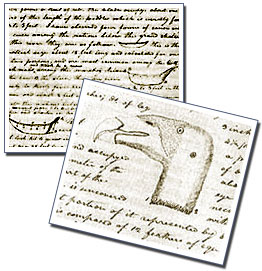 |
By
Wyatt Buchanan
The
story of Meriwether Lewis and William Clark is one of the great
exploration adventures in United States history, with the two men
trudging across the continent surveying the new land and leading
the way for westward expansion.
But the story is often told from the explorers’ point of view
and much is left out or not known — like how the whole trip
nearly ended in Nez Perce Indian country, as the tribe considered
killing the men and their invading entourage.
"A lot of people don’t know the original intent was to
do away with them," said Josiah Pinkham, Nez Perce tribal ethnographer.
An elderly tribal woman had spent time with white people and was
treated kindly, so she implored the tribe to do the same to Lewis
and Clark, Pinkham said.
"From that point on we decided to treat them good."
It’s telling stories like this, and letting tribes share their
half of history, that is the goal of a bicentennial anniversary project
spearheaded by researchers at the University of Idaho.
"Lewis and Clark historians are numerous. Historians who focus
on the Native side of the story are few and far between," Pinkham
said.
The project, called "Lifelong Learning Online" is funded
by a two-year, $3.6 million grant from the National Aeronautics and
Space Administration. UI is working with the University of Montana
and Wheeling Jesuit University to build a Web site that integrates
history, math and science built around the Corps of Discovery expedition,
said Jean Teasdale, project director.
"Our whole purpose is to inspire people to learn and we use Lewis
and Clark because it is an interesting topic right now," Thomas
said.
On their expedition, Lewis and Clark encountered plants, animals,
lands and cultures they had never seen. How they gathered information
on the land and how they learned to adapt can teach students and others
how to explore new things, Teasdale said.
This information is being in a Web site that went live in January,
more information will be added over time. The site will have different
location-based information from different sites along the expedition
trail. Some of these sites include Philadelphia, Great Fall, Mont.,
and St. Louis. There will also be information on non-location aspects
of the trek, like the buffalo – its habitat, history and demise.
Using this model, Teasdale said there are plans to create a similar
type of Web site for the planet Mars. "Louise and Clark"
will be the fictional gender-balanced duo who use the same exploration
techniques of Lewis and Clark to gather information on the Red Planet.
The site will be targeted to fifth and sixth graders, Teasdale said.
But the site is more than an informational tool. Project coordinators
also see their work as a way to let the Nez Perce and other tribes
along Lewis and Clark’s route to give their version of the story.
"A lot of stuff has been written, but it’s always in someone
else’s words," Thomas said. "We want to give them
a vehicle to tell their own stories."
 |
| Many
Wounds |
|
 |
| Pages
from Lewis and Clark's diaries |
 |
 |
Rodney Frey, acting director of the American Indian Studies Program
at UI, is working with the Nez Perce tribe to make sure the story
is told right.
"Doing it the right way is so important," Frey said. "There
has been so much exploitation and we want to make sure it is done
right through the tribal perspective."
Frey interviewed tribal members and is focusing on what life was like
for the Nez Perce before Lewis and Clark, the two contacts the expedition
had with the tribe and how the Nez Perce took care of Lewis and Clark.
Along with history, Frey said it is important for people to see the
tribe as it is today.
"This will go beyond Lewis and Clark. That is an important part
of their lives, but the Nez Perce are alive and vital today as well."
Of the 50 tribes Lewis and Clark encountered on their trek, the Nez
Perce will be the main tribe on the Web site because of their pivotal
role in the whole expedition, Frey said. He will also do a small segment
on the Coeur d’Alenes and a segment on the Confederated Tribes
of Warm Springs in north central Oregon.
All of this should give the Lewis and Clark curious a better perspective
on the typical Corps of Discovery story.
"Anybody can go to the book store and get a book on Lewis and
Clark and the history associated with them," said Pinkham of
the Nez Perce. "Not many people have access to tribal history."
|
 |



